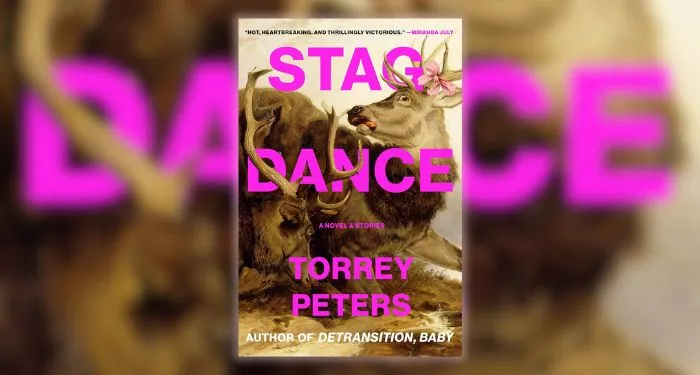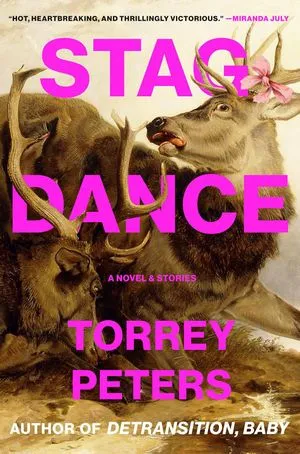Laura Sackton is a queer book nerd and freelance writer, known on the internet for loving winter, despising summer, and going overboard with extravagant baking projects. In addition to her work at Book Riot, she reviews for BookPage and AudioFile, and writes a weekly newsletter, Books & Bakes, celebrating queer lit and tasty treats. You can catch her on Instagram shouting about the queer books she loves and sharing photos of the walks she takes in the hills of Western Mass (while listening to audiobooks, of course).
Like so many others, I loved Torrey Peters’s debut novel Detransition, Baby, which (rightly) received massive praise. I was so wildly excited when I heard she had a new one coming out, and I was even more wildly excited when it lived up to my extraordinarily high expectations. This collection of short fiction is, in some ways, a departure from Detransition, Baby. Peters plays with genre in new and delicious ways, using horror, dystopian fiction, and historical fiction to tell stories that complicate ideas about transness, bodies, autonomy, sex, and intimacy in the past, present, and future. But if you, too, loved Detransition, Baby, don’t worry: this book is brimming over with the same incredible character work, emotional dexterity, and gorgeous prose.
Stag Dance by Torrey Peters
In this collection of three stories and one short novel, Peters explores the fraught experiences of gender, desire, and embodiment. There’s a post-apocalyptic story about a virus that changes how everyone relates to gender; a love story about two teenagers at a Quaker boarding school; a historical piece set in an illegal logging camp; and a dark work of social horror about a crossdresser facing a turning point in her life. Peters wrote these pieces over the course of 10 years, which gives them an incredible sense of movement and restlessness.
In an interview on the Between the Covers podcast, Peters mentioned how there are almost no “named” trans characters in the book. Offhand, I can only think of three, although there might be one or two other minor ones I’m forgetting. My favorite novella, an incredibly tender exploration of gender, longing, language, and masculinity set in an illegal logging camp in the early 20th century, doesn’t even include words like trans or queer or gay—they’re not words that exist for the characters.
I can’t stop thinking about this because Stag Dance has some of the most exciting trans writing I’ve encountered in a while. Peters’s characters are messy and unformed. They are full of “weird gender feelings” (as she describes it) and they often make terrible and/or impulsive choices. They’re reaching—for language, for wholeness, for safety, for ease, for connection, for intimacy—and they don’t always find it. They name themselves with uneasy words, and they often refuse to name themselves at all—in fear or protection or just confusion. Their transness is alive, shifting, shadowy, liminal. It lives in the body more than in language.
Reading this book also brought Elaine Castillo’s philosophy of “Positive Representation Art,” to the forefront of my mind. (If you haven’t read her book How to Read Now, what are you waiting for?) Castillo talks about the harm this kind of art can do with its tendency toward flattening and simplifying, and about how the very idea of “positive representation” assumes a position of needing to justify someone’s humanness.
Unusual Suspects
Sign up to Unusual Suspects to receive news and recommendations for mystery/thriller readers.
Stag Dance is an antidote to Positive Representation Art. I don’t mean that it’s about “bad” people, either. Rather: it’s about people, who are almost never just one thing. With her characters, Peters breaks down the binaries between good/bad and moral/amoral. Positive Representation Art upholds these binaries at all costs. Art that refutes the whole notion of positive representation (and maybe representation more broadly) understands that none of these binaries are real, that good/bad isn’t an either/or but a both/and. Queer and trans people do not exist on some higher moral plane from everyone else. We are just as flawed and messy and often strange and sometimes misguided. We need queer and trans art that reflects that, and Stag Dance, gloriously, does.





















 English (US) ·
English (US) ·